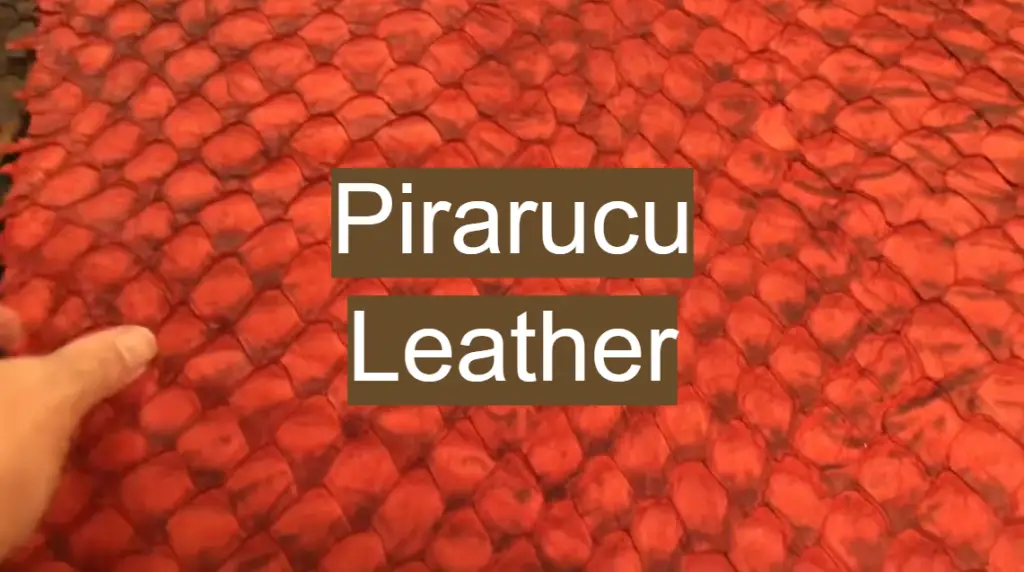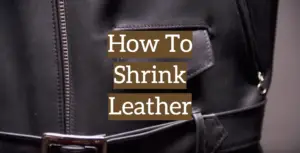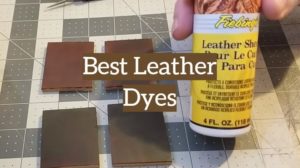
A Pirarucu trout is better known as Arapaima or Paiche. This freshwater fish can expand to more than 2 meters long and weigh more than 220 pounds, not anything that you want to experience when swimming quickly. A local indigenous word that means Pirarucu is the name of a redfish possibly referring to the red specks near its tail.
But it’s not just an ordinary fish. Piccaru fish that can be considered as equal to bovine leather because it’s so big. For decades, Pirarucu fish has become an everyday staple of the diet of people in Brazil. The scaly skin of this fish was discarded after feeding.
The largest recorded Arapaima Gigas was 15 feet tall, with 440 pounds being the highest one. Their measurements have been used on instruments for hundreds of years (they use these parameters to be protected from piranha). They have been considered a simpler grab because they are reliant on surfacing for oxygen. Data on their current conservation status, though, is incomplete.
Most shops selling Pirarucu leather can market it for up to or over $500 per one piece.
About the Pirarucu leather production and uses
To produce a new luxury and eco-friendly cloth, Oskar Metsavaht, a designer and creator of the Brazilian fashion company Osklen, decided to use this special “fish leather”.
A series of clothes (jackets) and accessories (bags) emerged in this manner. The latest material for Pirarucu “combines aesthetics and ethics”. The makers of the current eco-friendly “leather” content claim that Pirarucu fish skin is more durable than a cow’s skin. Pirarucu leather is more flexible than cow leather as an environmentally sustainable option, though it is lighter and smoother, and also fits better for clothing and other items.
The business buys fish skins solely from local fishermen, which only fish after hitting a certain scale (over 3 feet). It is feasible to take just 20% of the species from each lake.
Clothes, bags and accessories crafted from the scaly skin of Pirarucu fish were introduced by Fashion Company Osklen. The Brazilian produced Pirarucu fish leather scaly clothes and fashion accessories found in the Amazon rivers and lakes. Pirarucu leather is made from footwear, handbags, purses, car seats, leather jackets, sofa cushions, caps, wallets, belts, and other other styles of objects.
Benefits:
- Sturdy;
- Very comfortable;
- Thick and lightweight at the same time;
- Exotic texture;
Pirarucu leather is robust and incredibly comfortable. A patchwork top is combined with Pirarucu scales. Consider buying the Pirarucu boots with rubber and neoprene inserts. Neoprene across the key portion of the foot and heel is the hybrid sole on this boot. The rubber on the toe and sides will make the boots more durable. This enables a robust and resilient sole while preserving the conventional look of leather.
If the same thicknesses are compared, fish leather is thicker than other kinds of leather. This is because fish skin’s fiber arrangement runs crosswise, rather than parallel, as in cowhide, for example. It is up to 90 Newtons of the tensile strength of fish leather (e.g. salmon or perch).
For several things, Pirarucu leather is a heavier, rarer, and highly sought after fish leather.
As one of the most exclusive materials in the world, Pirarucu fish leather may be a little fragile. It’s really necessary that you understand that not all ground is your boots, we still recommend not exposing them to incredibly damp conditions and, of course, not making them wet.
Care and maintenance
Always keep in mind that special treatments are required for Pirarucu leather to look flawless and beautiful.
Using a premium leather cleaner, coupled with a safe cream, cleaning should be performed with caution to ensure that the smooth to contact size finish remains supple to prevent drying out. A daily covering of protective cream can ensure that Pirarucu leather remains in great condition. It is often suggested to add a coat of softening cream occasionally.
Carefully check a few Pirarucu leather maintenance tips:
1) Dust off
Using a brush is the first move in maintaining the goods from dust or gravel. It has to be very, very smooth and consistent, and you have to brush in one direction slowly and carefully.
2) Clean
You’ll need a lightly moistened cloth for this process, don’t dampen it. You should clean Pirarucu leather, do not wash it. To prevent harming them, the motions should be soft, steady and always in the direction of the scales.
3) Retouch
There could be occasions where the stains really won’t fall off. You should use a powdered dye for this. Be sure the color of the dye is the same as the leather and do so gently again when you add it. If you add so many, it can produce deeper stains. Be mindful of how much dye you use.
4) Protect
It is important that you secure them now that your items are safe and repaired. You should get a silicone spray with water-repellent properties. These kinds of sprays are suitable for porous leathers, but you must be cautious with silicone products. Do not use it whenever you clean the product or it may stain the Pirarucu leather surface. For a couple of days, a light layer can suffice.
Pirarucu leather is good quality and resistant material but you have to take care of them and use them in the best way so that your product will mature gracefully.
Final thoughts
Pirarucu leather is a finely textured alternative to cowhide leather and is crafted from waste Pirarucu fish skin. The creation of Pirarucu leather developed in Brazil helps the local communities in the Amazonian biome through income generation and protection of biodiversity.









